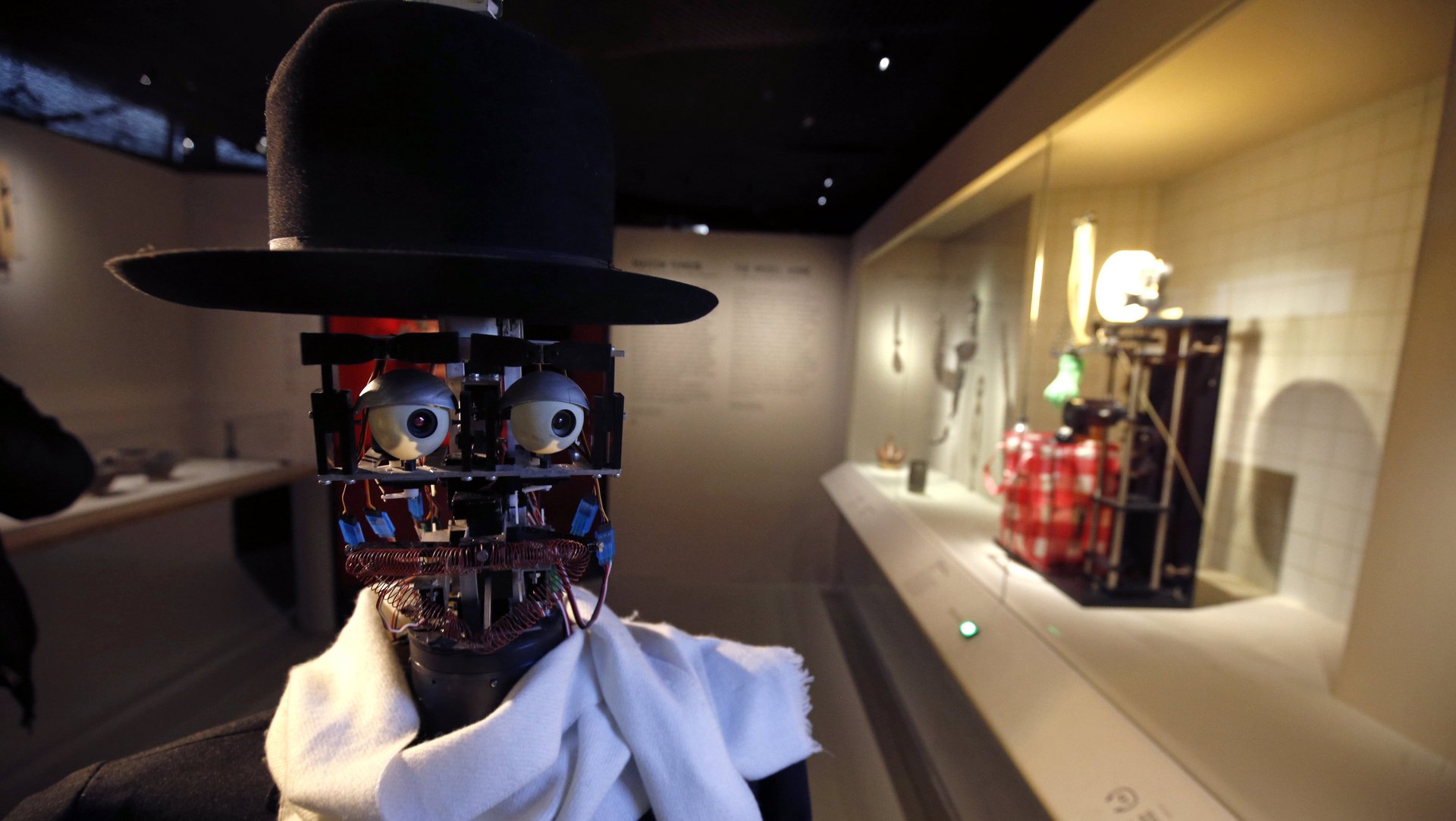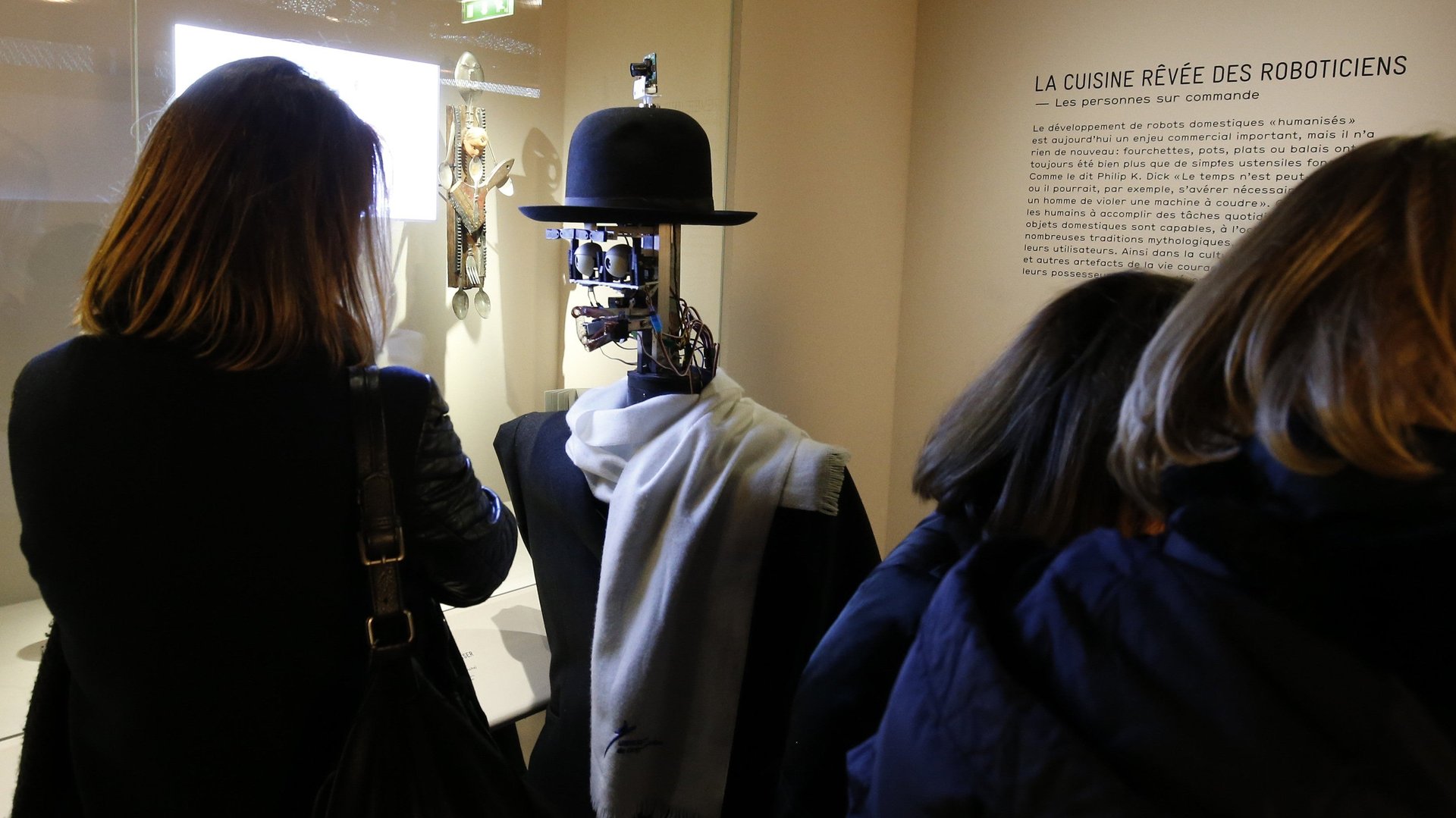This robot “art critic” is as clueless about art as the rest of us
He wanders silently around an art exhibit, unsure of what’s “good” or “bad,” until he observes the reactions of other patrons who seem like they can tell a Monet apart from a Manet. No, we’re not talking about you on your last Tinder date at the Met. We’re talking about Berenson, a wide-eyed, bowler hat-wearing art connoisseur—who also happens to be a robot.


He wanders silently around an art exhibit, unsure of what’s “good” or “bad,” until he observes the reactions of other patrons who seem like they can tell a Monet apart from a Manet. No, we’re not talking about you on your last Tinder date at the Met. We’re talking about Berenson, a wide-eyed, bowler hat-wearing art connoisseur—who also happens to be a robot.
Designed in France by engineer Philippe Gaussier and anthropologist Denis Vidal (link in French), Berenson uses a neural network to form his own unique tastes in art. First, he creepily watches how others react to certain works of art. Then he assigns each reaction a “positive” or “negative” value, and runs the data through his artificial brain to create an “opinion” of his own. The idea is that the more art he sees and the more reactions he catalogs, the more distinct his preferences become.
When Berenson sees art that he “likes,” he smiles. When he is insulted by the very existence of a work of art, he frowns, and, irritated, walks away. You can watch Berenson watch people look at art at Musée du quai Branly in Paris, where he’s part of its “Persona: Strangely Human” exhibit through Nov. 13. The exhibit investigates humans’ relationships with inanimate objects. You can watch a video of Berenson strolling around the exhibit on Business Insider.

Berenson’s algorithm only works when the people he observes actually react, visibly, to the art they examine. In other words, the writer of this story would be of no help to Berenson, as his reaction to most art is an indiscernable stare. Berenson might consider that to be a”negative” reaction, but he’d be wrong half the time.
Limitations aside, Berenson is a pretty clever satire of criticism in the age of the internet. Everyone can (and does) share their opinions of movies, television, music, literature, and other art forms online—and with little substance. Often, these opinions are informed by the reactions of other people.
Perhaps even more disconcerting than the death of meaningful criticism is that robots may soon be able to perform functions that not long ago seemed uniquely human—like forming opinions about art. Why read a lengthy critique of something when a robot can just give you the heads up in a few seconds? Frown, and walk away.